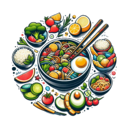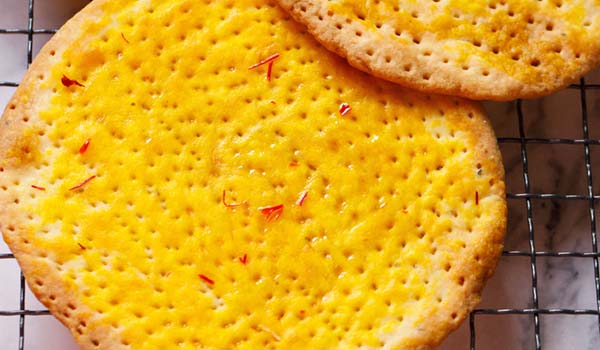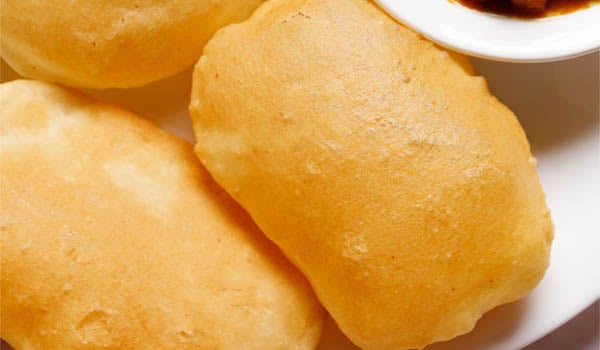Sheermal, also known as Shirmal, is a mildly sweet, saffron-infused flatbread that boasts a soft, aromatic, and rich texture. Traditionally baked in a tandoor or on a griddle, Sheermal Bread is cherished in regions such as Lucknow, Hyderabad, Kashmir, and parts of Awadh. This delightful bread, rooted in Mughlai cuisine with Persian influences, is made with key ingredients including all-purpose flour, milk, sugar, saffron, and ghee. Typically enjoyed warm, it pairs beautifully with rich spiced gravies or can be savored on its own as a tea-time snack.

About Sheermal
Sheermal, or Shirmal, is a traditional leavened bread with Persian origins, forming an essential part of Awadhi cuisine. The name is derived from the Persian words ‘sheer’ (milk) and ‘malidan’ (to rub or knead), which translates to ‘milk-rubbed’ or ‘milk-kneaded.’
This saffron-flavored Sheermal is commonly prepared and enjoyed in regions like Kashmir and Lucknow. Infused with the delightful aromas of cardamom, kewra water, and desi ghee, it is often referred to as Sheermal Roti or Sheermal Naan.
Unlike everyday Indian breads such as Roti or chapati, crafting Sheermal requires considerable time and effort. Essentially, it is an enriched milk bread that demands patience during preparation.
There are two variations of the Sheermal Recipe: salty and sweet. The salty version has a subtle sweetness, which is the focus here, while the sweet version contains more sugar and can be topped with slivered nuts, raisins, or poppy seeds before baking.
Sheermal can be made with either leavened or unleavened dough. For leavening, yeast or baking soda/baking powder can be used. Although this recipe does not include any leavening agents, it still results in a rich and soft textured bread, thanks to the milk and ghee that contribute to its softness and flaky texture.
The dough for Sheermal, enriched with milk and melted ghee, must be kneaded patiently until it reaches a soft, fudge-like consistency, similar to Mawa (Khoya) or dried milk solids.
Sheermal Bread can be baked in an oven or cooked on a skillet (tawa). The baked version achieves a crispy, flaky texture akin to a delicate cookie, while the skillet version combines soft and crispy elements. Traditionally, it is prepared in a tandoor like Naan, but home ovens can be used at their highest temperatures of 230 to 280 degrees Celsius (450 to 535 degrees Fahrenheit) for similar results.
How to Make Sheermal
Make the Dough
- In a mixing bowl, combine 2¼ cups of all-purpose flour (281 grams), ¼ teaspoon of salt, and ½ teaspoon of green cardamom powder. Set aside.
- In a small saucepan, take 1 teaspoon of sugar.





